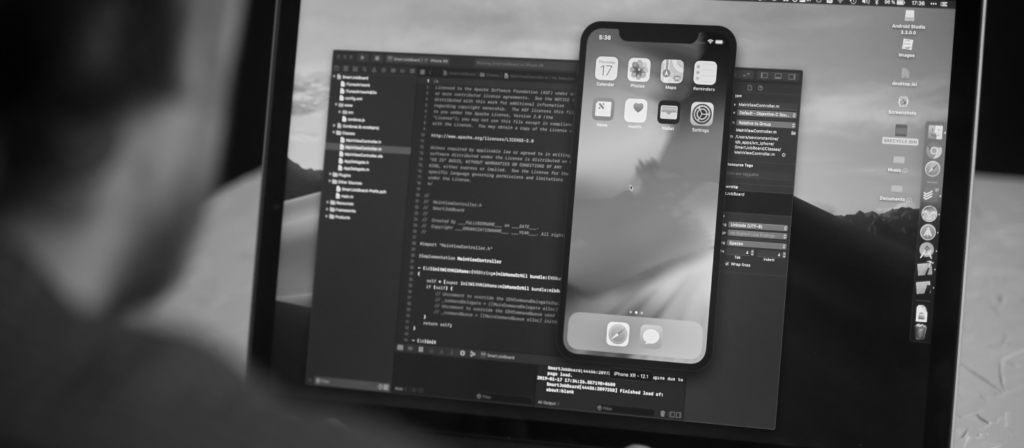
These days, everyone has a smartphone — from teenagers to your grandparents. For your mobile app to be successful, it needs to appeal to as broad a target audience as possible. ‘Appeal’ used in this sense can mean many things, not least of all how accessible the software is.
There’s no disputing the fact that technology has made our lives easier. Unfortunately, innovative technologies are not always available to all people. An individual with a disability, for instance, be it physical, visual, or auditory, will often find mobile apps to be inaccessible.
The World Wide Web Consortium (W3C) is an organisation that develops international standards relating to web accessibility. Included in these standards are guidelines to help developers build applications for mobile devices that are accessible to all users.
Newpath Web is a mobile app development company that understands the importance of accessibility. We have built applications for businesses of all shapes and sizes and recognise that a great app is one that all people feel comfortable using. Keep reading to discover a little more about technology and accessibility and the principles we use to create world-class Android and iOS apps.
Why is accessibility important?
We use digital devices for a range of purposes, everything from streaming our favourite TV shows to managing our financial affairs. The prevalence of technology might lead us to assume that all people have the same experience when using a mobile device, but this couldn’t be further from the truth.
Think about it — a smartphone is typically quite small in size. You need a base level tech knowledge to operate the device and the ability to hold it in your hand. Finger dexterity is required to navigate the touchscreen, as is good eyesight, so you can read what is in front of you. For many, many people, these prerequisites effectively prevent them from making use of technology that is available to the rest of the population.
Accessibility is therefore important to create an inclusive society. All people should have equal access to tech tools and resources that can radically improve their quality of life.
At the same time, from a business perspective, an accessible app is more likely to appeal to a broader audience, which can only benefit your bottom line.
Accessibility and mobile devices
W3C has a broad definition for mobile devices. The term is intended to cover everything from small, handheld devices (such as your typical smartphone or smartwatch) to larger tablets. Their guidelines are extremely informative and point to the wide range of accessibility related issues that tend to be associated with mobile devices, including:
Screen size
An obvious accessibility issue that is often associated with mobile devices is the relatively small screen size. The fact of the matter is, there is very little that can be done to increase the size of the screen itself. There are, however, strategies that developers can implement to ensure that those with a visual disability are still able to access important information.
These strategies include minimising the amount of information that is put on each page and using a responsive design that adapts to the screen size.
Contrast
Contrast presents as a bigger issue on mobile devices than it does on desktops, as smartphones and tablets are often used in outdoor settings.
The Web Accessibility Guidelines states that accessible content ‘requires a contrast of at least 4:5:1 (or 3:1 for large scale text). How can you be sure that your mobile app meets these standards? Well, fortunately there are a range of online tools that can test contrast for you. You can also reach out to a professional mobile app development company with experience building accessible apps for advice and guidance.
Keyboard control
When the first smartphones started hitting the market, we were all blown away by the inclusion of a touchscreen. Unfortunately, touchscreens are decidedly not accessible to those with a physical or visual disability.
Many individuals rely on physical keyboards that can be plugged into their mobile device. Make sure that your mobile app supports such hardware.
Gestures
There are two types of gestures commonly associated with mobile apps — touchscreen gestures and device manipulation gestures.
The first is fairly self-explanatory; swiping and tapping on your touchscreen is necessary to interact with most mobile applications. Device manipulation gestures can include shaking your phone or tilting it in a certain direction. All of these actions can be difficult for someone with a physical disability; developers need to be aware of this and provide appropriate workarounds.
Building an accessible app
If you’re looking to build a new mobile app, one of your first questions should be — how can I make sure that this is accessible to all my customers?
Newpath Web’s team of experienced developers know what it takes to build an app that is innovative, engaging, and follows all of the relevant accessibility standards and guidelines. We have built iOS and Android apps for businesses across all industries and will be with you every step of the journey, from initial brainstorming to deployment and maintenance.
Contact us today to learn more about our experience developing accessible apps and how we can turn your digital dreams into reality.




